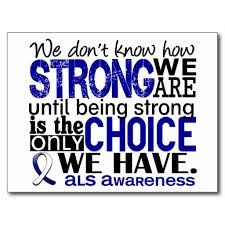The diagnosis of a chronic illness can be earth-shattering. Especially if you are a senior already dealing with aging issues. How will this condition impact quality of life? Will there be pain? Will it be manageable? What does the future look like? A thousand questions may be running through your mind. So what is ALS?
For those diagnosed with Amyotrophic Lateral Sclerosis (ALS) also known as Lou Gehrig’s Disease, it is important to understand the disease and the impacts. ALS is a fatal neurodegenerative disease. The journey for the sufferer and the family can be daunting.
How Common is ALS?
According to ALS Canada, approximately 2,500 to 3,000 people are living with ALS in Canada, with 1,000 newly diagnosed each year. Likewise, accordingly to the ALS Association in the US, approximately 6,000 people are diagnosed with ALS each year. It is estimated that more than 20,000 Americans may be living with ALS at any given time. This means across North America, there are many people living with ALS.
What are the impacts if ALS?
It occurs when the nerve cells that control your muscles die. This leads to eventual loss of mobility, speech and will eventually impact the ability to breathe. As the disease progresses, simple tasks will be harder to accomplish. Not everyone with ALS will experience the same symptoms or have all the areas of the body affected. It can strike people at any age, but most commonly attacks later in life.
What Are the Warning Signs of ALS?
- Persistent weakness or spasticity in an arm or leg
- Troubles with speech or slurring words
- Muscle cramps and twitches in arms, shoulders and tongue
- Behaviour changes
- Alterations in thinking
- Difficulty maintaining good posture
- Temporary lapse of control over emotional expressions (such as laughing and crying)
The disease frequently begins in the hands, feet or limbs and slowly spreads to other parts of the body. The muscles will get weaker as it progresses, making walking, sitting, speaking and even chewing progressively difficult. It does not generally affect a person’s brain function, bowel or bladder control.
What May Happen During the Diagnosis of ALS?
If you or your loved one has any of the symptoms noted above, see your healthcare provider. He or she will likely refer you to a neurologist, trained in nervous system conditions. It can take time to establish a diagnosis of ALS because it can mimic other neurological disorders. Your physician will review your family history and symptoms, and you may be asked to keep a symptom journal. This way, you can jot down whenever you have problems with hand coordination or involuntary muscle movements and a pattern can be established.
Currently, there are no known ways to reverse the devastating effects of ALS. At best, medications can be prescribed to ease the discomfort of the muscle spasms and cramps, sleep problems or fatigue. Speech and language pathologists can teach techniques to make speech more understandable. Occupational therapists can help you compensate for hand and arm weakness, which will enable you to keep some independence.
Knowing as much as you can about this chronic illness, and what the future holds, will help you maintain a sense of control over your body for as long as you can. Learn more at www.alsa.org or https://www.als.ca
This article is intended for informational purposes only. Please contact your health practitioner for more information and support.
























